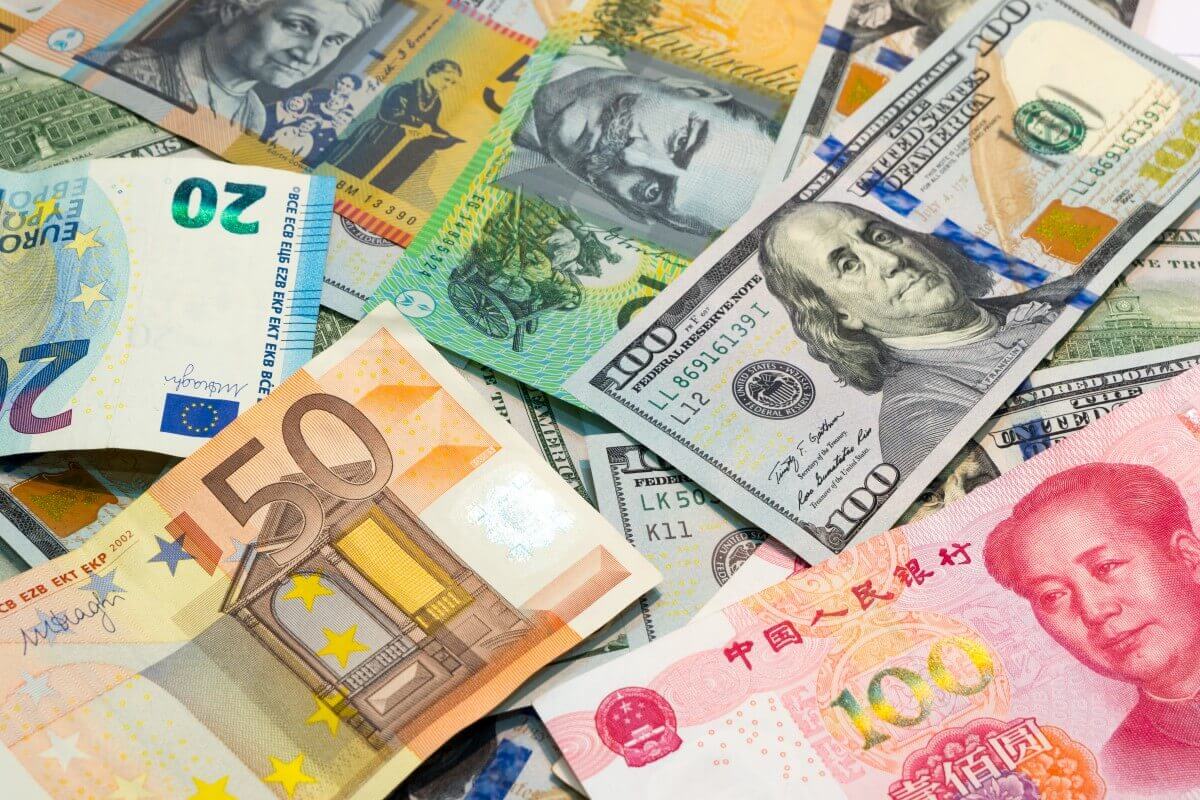The U.S. dollar consolidated gains today. It was on track for its biggest weekly surge in seven months, thanks to bets of higher interest rates. The latter fuelled the U.S. unit’s gains versus rivals.
Currently, money markets are pricing 32 bps of rate hikes in March, along with 124 bps in cumulative increases before the end of the year. Consequently, the greenback was in the limelight even after broader currency markets became somewhat subdued after an eventful week.
On Friday, U.S. Treasury yields steadied in London trading. 10-year yields climbed slightly higher, but they still stayed well below the two-year peaks of almost 1.9% hit on Monday.
Commerzbank strategists noted that the market had interpreted the Fed chair Jerome Powell’s comments in a hawkish manner. However, his statements have mainly affected the expectation of the speed of the rate cycle and not so much the extent of this cycle. Still, the euro tumbled down to $1.10 versus the U.S. dollar. The common currency nursed losses on Friday. It edged marginally higher to $1.1152 from a 20-month low of $1.1131 hit on Thursday.
Even though U.S. yields were marginally higher, in Asia, major currencies drifted sideways before the Chinese New Year holidays, which are due next week.
Meanwhile, new data showed that the U.S. economy registered its best annual growth in almost four decades. This news supported the greenback as well. Investors are waiting for more data, including the U.S. employment cost index and University of Michigan sentiment surveys, which are due later on Friday. They will likely reaffirm the Fed’s hawkish stance.
How did the Japanese Yen fare?
The yen exchanged hands at 115.43 to the dollar on Friday. Meanwhile, the Australian and New Zealand dollars declined. The kiwi tumbled down to a fresh 15-month low of $0.6570.
Thus far, the greenback has rallied by about 1.7% on the euro during this week while also gaining nearly 2% on the Antipodeans. The U.S. dollar index has jumped above 97 for the first time since July 2020.
On the other hand, the British currency plummeted down to a one-month low of $1.3385 on Thursday. However, it has rebounded to $1.3409 on Friday. Market players are waiting for the Bank of England’s meeting next week. Presently, rates markets are pricing a 90% chance of a hike.
Societe Generale strategist Kit Juckes noted that the dollar is on cycle highs. It will rise further as rate differentials and increased levels of market volatility provide support. However, he added that this is the last stage of the move.
What about the Emerging Market currencies?
In Asia, the Chinese yuan soared by 0.2% after its worst session since March 2020. The currency had plunged recently as pandemic panic gripped the forex market. The China-heavy EM stocks index was on course for a 4.3% weekly decline.
On Friday, Russian assets steadied after a day of strong gains. The United States recently rejected Russia’s demands for NATO security in eastern Europe. Moscow and Washington left the door open to more dialogue, as well.
The Russian rouble traded at 78 per U.S. dollar. It had breached the 80 levels earlier this week. Meanwhile, Moscow stocks surged forward by 0.4%. Both Russian and Ukrainian dollar bonds strengthened. However, Russian stocks were set to outperform their EM peers, gaining 0.8% over the week.
Despite such a rally, analysts warn about Russian assets as uncertainty remains. Strategists at Citigroup noted that the market is now preparing for a longer-than-expected period of heightened Russia-related geopolitical risk. As a result, global investors and traders are becoming more sensitive to Russian asset holdings. The strategists believe that uncertainty will continue, supporting the high volatility in RUB FX, as well as bonds and other Russian assets.
This month Ukraine’s hryvnia has shaved off 5.3%. The currency declined in 11 out of the last 12 weeks. Rising U.S. Treasury yields made for a cautious atmosphere. Still, most other currencies rebounded a day after the greenback ripped higher on hawkish Fed prospects.
On Friday, South Africa’s rand traded flat after a dovish interest rate hike in the previous session. Turkey’s lira surged forward by 0.3% as economic confidence rose. On Thursday, the central bank doubled the country’s inflation forecast for the year. The lira has been more stable since the government put some measures in place in December to fight its free fall.
Read also: PrimoTrade Review 2021: All You Need To Know!











